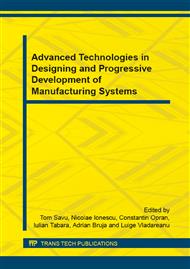p.123
p.129
p.135
p.141
p.147
p.153
p.159
p.167
p.175
On a New Chain Planetary Transmission for Renewable Energy Systems - Part I: Product Design
Abstract:
Mechanical transmissions are frequently used in renewable energy systems (RES), either as speed reducers in solar tracking systems (e.g. worm drive, planetary gear), or as speed increasers in small hydropower converters or wind turbines. Most of them are conventional transmissions characterized by large overall dimensions and/or low efficiencies; therefore, new mechanical transmissions with higher performances are highly investigated. The paper presents the development of an innovative chain planetary transmission for hydro/wind applications. The speed increaser transmission requires a well-defined transmission ratio according to the application (3 – 5 for hydro, 6 – 30 for wind), good efficiency, relative simple and compact structure, easy maintenance, and low-cost. The final proposed solution overcomes some limits of the RES transmissions, significantly increasing the efficiency while decreasing the system size and eliminating the chain pre-stressing. The steps of the product design process applied for innovative generation of high performance mechanical transmissions are shown in the Part I. The proposed chain planetary transmission integrated into a micro hydropower application is analyzed in the Part II: virtual prototyping, physical testing and optimization stages and results are detailed.
Info:
Periodical:
Pages:
147-152
Citation:
Online since:
May 2015
Authors:
Price:
Сopyright:
© 2015 Trans Tech Publications Ltd. All Rights Reserved
Share:
Citation:


